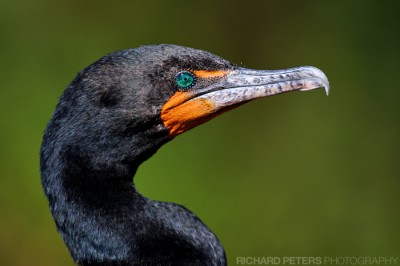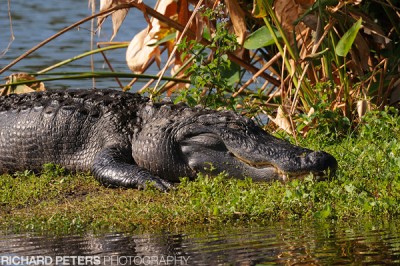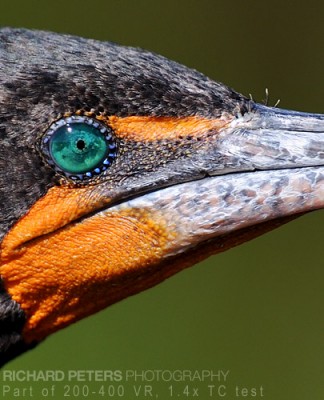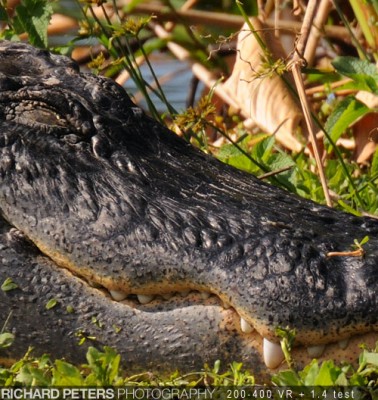When I posted my original review/faq on the 200-400 VR didn’t have a 1.4x TC. However as I now do I thought I’d follow up the review by talking about my own findings with this combination in real world situations. The shot below was taken at 550mm, max reach for the lens and TC combo – usually the softest focal length of a zoom, let alone with a TC thrown in as well. Lets see how it holds up in this article, along with another real world examples…

Cormorant, D3 + 200-400 VR, 1.4x TC, 550mm, f7.1, ISO 450
1.4x TC Overview
Length: 0.9 inches (2.3cm)
Width: 2.5 inches (6.4cm)
Weight: 0.2kg (0.44lbs)
Links: Official NIKON website
Purchase: Available in the UK from Warehouse Express and the U.S. from B&H PHOTO and Adorama.
Extra reach please
Of course, this is the reason we want to stick these things on the back of our beloved lenses…extra reach! You never can have enough, especially when trying to photograph wildlife. The desire for more reach with a tele usually comes at the expense of something else though…
Focusing
Ok first of all, let’s get this out of the way now. There IS a drop in performance with the 1.4x added to this lens, the focus is a little slower and can have a slightly harder time acquiring focus as the light levels drop…however…by using the focus limiter switch the speed in regaining acquisition is greatly improved as it stops the lens hunting through it’s entire focus range. It’s also worth pointing out that the slow down is barely noticeable in normal shooting conditions with a D3 unless photographing very fast moving subjects. With a D300 it’s a slightly more pronounced difference and it seems to find it harder to lock on sometimes – a couple of times even in the middle of the afternoon on a bright sunny day in Florida I had one or two instances where it hunted in conditions I wouldn’t have expected, like photographing an Egret in water, nothing but blue around the bird but it seemed to have trouble with the bright white feathers and would dart to the background then the bird again on and off. Stick the D3 on and it locked to the bird and stayed there (it’s worth noting, I found the D300 would hunt in other conditions without the TC on that the D3 had no problems with, so I suspect it wasn’t just the TC at fault but just the difference in focus performance of the two bodies, birds in amongst foliage for example proved tricky to pin point sometimes – the larger on screen focus points on the D300 may make it feel like you can’t get an accurate focus by picking your exact target area though). But I’d not say the performance is awful on a D300, just that after two weeks of shooting both camera’s side by side with this combo, it was clear they have focus differences with the D3 having the edge. Is the drop in focus performance worth worrying about though? If your shooting in the day, no. If your shooting at dawn or dusk, it will varying depending on your camera body and exact light conditions how long you can shoot before the light requires you to take the TC off.
Please note, the D300 I was using was fresh out the box with firmware 1.03 which is not the latest version. The latest of which is said to improve focus performance.
Image quality
This is what we REALLY care about…and I’ve got to say the image quality with the converter certainly usable. Of course it’s not as sharp as the lens alone but it’s good enough still that on a recent trip to Florida I pretty much had the 1.4x attached to lens for the whole two weeks (until a contact pin fell out of it two days before I came home at least!!). Wide open at max reach of 550mm and things are at their softest but stop the lens down a little or zoom back a tad and things improve. I didn’t want to use a shot for this article that was carefully setup, with the lens locked down and set to less than full zoom with it stopped down loads. Instead I opted for a typical shot taken whist out in the field as for me that’s more important as I use the 1.4x with my 200-400 when I want a light weight hand-holdable setup that I can swing around easily. So with that in mind, the shot at the top of this article was taken handheld at 550mm and f7.1 (so only 2/3 stop from wide open at f5.6) and the detail is quite acceptable I think! Below is a %100 crop that has been re sized, however click on the image and you will be taken to a full res un-sharpened Jpeg of the same crop section for you to download and play with yourself, applying your own sharpening methods. The Cormorant was about 12 to 15 feet away from memory.
As for further away subjects…although not a spectacular shot I’ve also included one of this large alligator (must have been a good 10 or 12 foot easy!) which was roughly 40 meters away (or around 130 foot). Taken with the D300 at 550mm (825mm effective with crop factor). The focus point was just to the right and below the closed eye. The shot is handheld and straight out of the camera, ISO 400.

D300, 200-400 + 1.4, 550mm, f8
As per the Cormorant photo, below is a reduced for web %100 crop section with no sharpening applied, to view it unsharpened at full resolution simply click on the image.
Fit
This isn’t something that is exclusive to the 200-400/1.4x combo but worth a mention. As I’m sure most of you out there will have experienced at times, some lens/body combo’s have a little bit of play at the lens mount, where you can twist the lens very very slightly. Well once you have the lens, TC and camera all attached to one another you introduce two points of play which can feel slightly worrying and it does make me wonder if dust and dirt is finding it’s way in at these joints, although I can’t say I’ve ever noticed any extra dust bunnies…but still…
Conclusion
Is the 1.4 in the 200-400 perfect? No. Would I recommend buying it for the times you need the extra reach? Absolutely yes! As I’ve said, the reach does come at a slight price, with softer images and a slightly reduced focus speed (which will show at varying amounts depending on your camera body). However given the flexibility it allows you I think those issues are not worth worrying about too much. I mainly use the 200-400 handheld, resting on any objects to hand or with a monopod and it suits me just fine, if you use proper long lens technique and good support (a tripod should give better results) you’ll do fine. I’ve said in the past that if you want ultimate reach with stunning optics then you should be looking at the 500/600 primes but not everyone wants to lug one of those around or can afford too! In which case the 1.4 is a great addition to anyones 200-400 bag.
Thinking of buying?
If you live in the UK the 200-400 can be purchased from Warehouse Express.
And if you live in America the 200-400 VR can be purchased from B&HPhoto, here and Adorama.
Do you have a review of the 200-400 itself?
Sure do, you can find it HERE.










